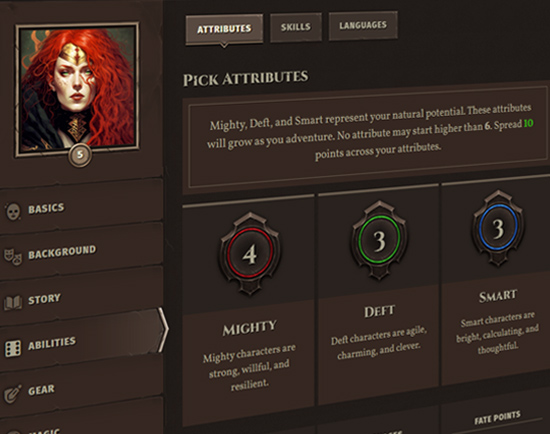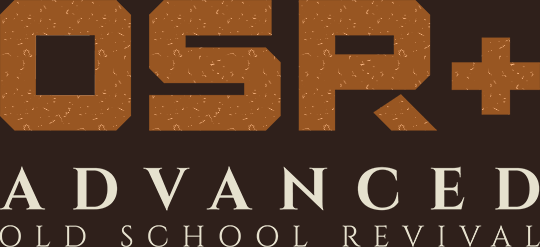Rolling to Attack
Your weapon's class determines which attribute to use for the attack roll. Blunt weapons, for example, use Mighty, while Light weapons use Deft. If you have a skill that matches the weapon class, add a +2 to the attack.
For example, if you’re using a dagger (which is a Small weapon) and you have the skill Weapon (Small), you make a Deft check and add a +2 to attack. If you roll equal to or higher than your opponent’s defense check, you hit and deal damage to your opponent. Alternatively, you may use a tactic against your opponent in lieu of dealing damage (if the tactic permits). You may only use tactics if you are skilled with the weapon.
Rolling a Defense Check
When you make a defense check, your attempt to avoid the attack can be represented in the fiction in a number of ways: dodging out of the way, pure luck, taking the hit to your armor, deflecting the blow with your shield, parrying with your weapon, etc. Roll a d6 and add your defense. This becomes your defense score. If you choose to parry, you do not roll a defense check.
Attacks of Opportunity
If you're trying to move away from an opponent you are currently in combat with, the GM may allow your opponent to attack you out-of-turn as a reaction, if they have an attack available in the round. Additionally, the GM may grant you a roll (such as a Reflexes check) to break out of the engagement without triggering this attack of opportunity. Attacks of opportunity only factor in if it's already been established that your opponent has cornered you and is capable of attacking you.
Reactions
Reactions are extra actions you can take outside your turn. An ability that grants a reaction will specify when you can react and how often, and whether or not it will use up your action in the round. For example, the kit ability Swashbuckler is an ability that grants you a reaction against any attack you successfully parry:
Swashbuckler
A life of dangerous journeys has made you fast on your feet and quick with your hands. After successfully parrying an attack, you may make an attack as a reaction at disadvantage, as long as you have MP. You may spend 2 MP to take advantage on defense checks.
 Archetypes
Archetypes Armor
Armor Classes
Classes Conflicts
Conflicts Cultures
Cultures Ethos
Ethos Flaws
Flaws Glossary
Glossary Kits
Kits Maleficence
Maleficence Origins
Origins Shields
Shields Skills
Skills Spells
Spells Stances
Stances Status Effects
Status Effects Tactics
Tactics Talents
Talents Techniques
Techniques Treasure
Treasure Weapons
Weapons












 Hall of Heroes
Hall of Heroes Hall of Legends
Hall of Legends



 Dungeons & Flagons
Dungeons & Flagons